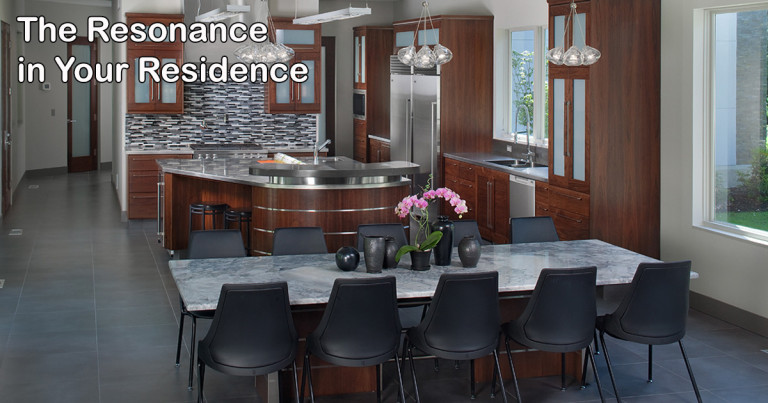You’ve just moved into your new home, or maybe you recently did some renovations and there it is – noise. Unwanted sound right where you live. There’s an echo, a hum, or you can hear everything going on next door, every footstep above, and the traffic outside is louder than you thought. You love your home, but the sound is making you crazy.
The noises you’re hearing can come from a variety of sources. Whether it’s heating and cooling (HVAC), plumbing, or noise from next door or across the street, those need professional acoustical and construction help. However, the most common, and sometimes easiest problem to handle is the noise generated by echo in a room. There are some basic things you can do to make your home easier on your ears.
DIY Acoustics
Hard surfaced floors, walls, and ceilings, the windows, and even furniture can add more opportunity for sound to bounce around. Popular open floor-plans, along with high ceilings and large room volumes gives the sound more space to echo. In your own home, as a do-it-yourself project, you can start with absorptive materials like carpet or area rugs, cushy furniture, curtains, and fabric wall hangings (ceilings are often best handled by professionals). When the sound is absorbed by those materials, then the room becomes more acoustically comfortable for typical uses.
If you’re trying to preserve a certain design aesthetic, or for rooms with a specific acoustical character (home theaters), or if you have other noise problems, it’s best to contact a professional. Ideally, the architect, builder, or condo association would retain an independent acoustical consultant at the beginning of the project.
Professional Help
In your house, condominium, or apartment building independent acoustical consultants generally work in three areas of acoustics.
- Room Acoustics – the way sound bounces or echoes in a room.
- Noise Isolation – the way sound transfers or moves from one space to another, often through a partition such as a wall, floor, or ceiling.
- Mechanical Noise – the sound generated by your heating, cooling, plumbing, and other building systems.
When ABD Engineering & Design is brought onto a residential project, we help your architect with the design, and your builder with the construction. We help them make sure the walls and floors do a better job of shielding you from noise, we develop noise control strategies for mechanical systems, and we consider the materials, finishes, and surfaces; all to improve the acoustics. Even allowing you to keep those popular hard surfaces.
Post-construction, or after moving in, there’s always something that can be done. You must weigh the practicality of such a project, and what you’re willing to do or endure to make it happen.
For more on residential acoustics, see The Resonance in Your Residence Part 2 and Part 3.
